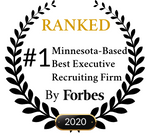
If you’re a hiring manager, you’ve heard of “flexible work arrangements.” You’re likely already enabling some form of workplace flexibility within your own team. Or maybe you’ve managed to bob and weave and dodge the need up until now. But wherever you are on the “flexibility” spectrum, there are a few things you should know as you enter 2020.
1. The very definitions of “workplace flexibility” and “work-life balance” have changed.
Let me take that a step further: they haven’t just changed. They’re continuously evolving. It wasn’t that long ago that these arrangements could be summed up in a list of 2 or 3 solutions: “telecommuting” or “variable schedules” or “job sharing.” But today there are, literally, hundreds of ways to build non-traditional flexibility into your corporate culture, the ways you define and structure your “workplace,” and the performance standards for each job within it.
2. It’s not just a “millennial” thing.
The Bureau of Labor Statistics has estimated that next year, one quarter of all American workers will be 55 years old of age or older. And recent surveys of workers over age 40 consistently indicate their strong desire for flexible work options. So, millennial's may have driven the demand for workplace flexibility. They may have opened employers’ eyes to the importance of work-life balance. But they’re not the only people who want – and would benefit from – a higher degree of freedom and self-determination in establishing their working hours and desk locations.
Everybody wants those things now. If your view of workplace flexibility is that it’s a millennial-specific recruiting tool, you’re not really grasping the breadth of the demand.
3. No longer a workplace perk, flexibility is a fundamental.
The idea of job flexibility has been around for a long time. But until recently, it was a niche structure, a prized perk that only the most in-demand, tough-to-recruit candidates could realistically ask of their bosses. Today, after a solid decade-plus of economic recovery and record unemployment rates, every job is tough to fill and every solid candidate is prized like a unicorn. It’s not surprising then, that employers have invested heavily in offering the flexibility that today’s candidates crave. But therein lies a risk for employers who see this as a mere swing of pendulum.
Sure, with the next economic cycle, we will once again be in an “employer’s market.” But when that happens, you won’t just be able to turn back the clock on telecommuting, flexible schedules or any of the other 300 arrangements at play today. Technology has permanently, exponentially expanded our abilities to do our own work, collaborate with others, connect with managers, customers, and other key stakeholders, and deliver high quality product and performance. You can’t un-ring that bell.
It’s time to embrace the fact that yesterday’s rigid 8-5 schedules aren’t in hibernation until the next cycle. They’re extinct.
4. Workplace flexibility benefits you, the employer, in more ways than you may know.
A robust commitment to flexibility allows you to compete for top candidates and helps you retain your current employees. It also radically expands your traditional talent pool, creating an almost unlimited geographic area from which you can recruit. But if design and manage it well, you should also see the quality of worker performance improve. That shouldn’t be too surprising. When you create whole teams, staffed by people who feel valued and trusted by you, they’ll keep producing great work.
5. Flexibility is a mindset, not a handful of job structures.
Sometimes, when employees or candidates ask about flexible work arrangements, an employer’s first response is to offer the option that seems least likely to disrupt the way things have always worked. But this unwillingness to disrupt is part of the problem. Think about it: replacing one rigid job structure with one alternative – but equally rigid – job structure rarely addresses the real need. Employers, their HR teams, hiring managers, and employees would all fare much better by working together to define a general set of parameters. Start by asking what are the needs of your workforce and the talent pool from which you wish to recruit? What’s at stake if you can’t meet those needs? The idea here is that “flexibility” needs to be just that: flexible. Often, the best solutions contain a healthy dose of openness. Because employees are human beings, their lives – and their career needs – are constantly changing. Successful employers are not only accepting that fact, they are accommodating it.
So where do you fall on the flexibility spectrum? Are there other ways your organization supports work-life-balance that are worth mentioning? Leave us a comment.






